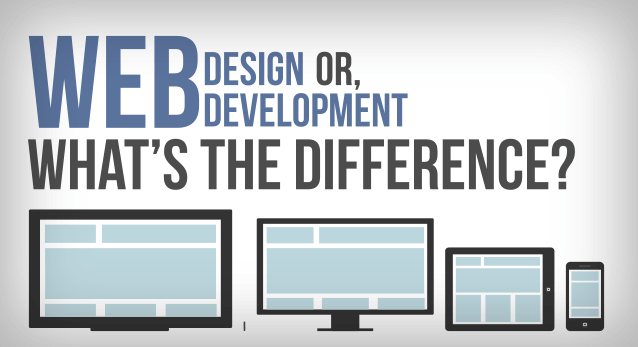Public relations (PR) is the practice of managing the spread of information between an individual or an organization (such as a business, government agency, or a nonprofit organization) and the public. Public relations may include an organization or individual gaining exposure to their audiences using topics of public interest and news items that do not require direct payment. This differentiates it from advertising as a form of marketing communications. Public relations is the idea of creating coverage for clients for free, rather than marketing
or advertising. An example of good public relations would be generating
an article featuring a client, rather than paying for the client to be
advertised next to the article.
The aim of public relations is to inform the public, prospective
customers, investors, partners, employees, and other stakeholders and
ultimately persuade them to maintain a certain view about the
organization, its leadership, products, or political decisions. Public relations professionals typically work for PR and marketing firms, businesses and companies, government, government agencies and public officials as PIOs and nongovernmental organizations, and nonprofit organizations.
Jobs central to public relations include account coordinator, account
executive, account supervisor, and media relations manager.
Public relations specialists establish and maintain relationships with an organization's target audience, the media, and other opinion leaders. Common responsibilities include designing communications campaigns, writing news releases and other content for news, working with the press, arranging interviews for company spokespeople, writing speeches for company leaders, acting as an organization's spokesperson, preparing clients for press conferences, media interviews and speeches, writing website and social media content, managing company reputation (crisis management), managing internal communications, and marketing activities like brand awareness and event management Success in the field of public relations requires a deep understanding of the interests and concerns of each of the client's many publics. The public relations professional must know how to effectively address those concerns using the most powerful tool of the public relations trade, which is publicity.
Within each discipline, typical activities include publicity events, speaking opportunities, press releases, newsletters, blogs, social media, press kits, and outbound communication to members of the press. Video and audio news releases (VNRs and ANRs) are often produced and distributed to TV outlets in hopes they will be used as regular program content.
On the other hand, stakeholder theory identifies people who have a stake in a given institution or issue. All audiences are stakeholders (or presumptive stakeholders), but not all stakeholders are audiences. For example, if a charity commissions a public relations agency to create an advertising campaign to raise money to find a cure for a disease, the charity and the people with the disease are stakeholders, but the audience is anyone who is likely to donate money. Public relations experts possess deep skills in media relations, market positioning, and branding. They are powerful agents that help clients deliver clear, unambiguous information to a target audience that matters to them.
Digital marketing is the use of Internet tools and technologies such as search engines, Web 2.0 social bookmarking, new media relations, blogging, and social media marketing.
Interactive PR allows companies and organizations to disseminate
information without relying solely on mainstream publications and
communicate directly with the public, customers and prospects.
PR practitioners have always relied on the media such as TV, radio, and magazines, to promote their ideas and messages tailored specifically to a target audience. Social media marketing is not only a new way to achieve that goal, it is also a continuation of a strategy that existed for decades. Lister et al. said that "Digital media can be seen as a continuation and extension of a principal or technique that was already in place".
PR professionals are well aware of the fact that digital technology is used in a practically different way than before. For instance, cellphones are no longer just devices we use to talk to one another. They are also used for online shopping, dating, learning and getting the most up to date news around the world.
As digital technology has evolved, the methods to measure effective online public relations effectiveness have improved. The Public Relations Society of America, which has been developing PR strategies since 1947, identified 5 steps to measure online public relations effectiveness.
Public relations specialists establish and maintain relationships with an organization's target audience, the media, and other opinion leaders. Common responsibilities include designing communications campaigns, writing news releases and other content for news, working with the press, arranging interviews for company spokespeople, writing speeches for company leaders, acting as an organization's spokesperson, preparing clients for press conferences, media interviews and speeches, writing website and social media content, managing company reputation (crisis management), managing internal communications, and marketing activities like brand awareness and event management Success in the field of public relations requires a deep understanding of the interests and concerns of each of the client's many publics. The public relations professional must know how to effectively address those concerns using the most powerful tool of the public relations trade, which is publicity.
Tactics
Public relations professionals present the face of an organization or individual, usually to articulate its objectives and official views on issues of relevance, primarily to the media. Public relations contributes to the way an organization is perceived by influencing the media and maintaining relationships with stakeholders. According to Dr. Jacquie L’Etang from Queen Margaret University, public relations professionals can be viewed as "discourse workers specializing in communication and the presentation of argument and employing rhetorical strategies to achieve managerial aims.- Financial public relations – communicating financial results and business strategy
- Consumer/lifestyle public relations – gaining publicity for a particular product or service
- Crisis communication – responding in a crisis
- Internal communications – communicating within the company itself
- Government relations – engaging government departments to influence public policy
- Media relations – a public relations function that involves building and maintaining close relationships with the news media so that they can sell and promote a business.
- Celebrity public relations− promotion of a celebrity to various media publications and outlets
- Food-centric relations – communicating specific information centered on foods, beverages and wine.
Within each discipline, typical activities include publicity events, speaking opportunities, press releases, newsletters, blogs, social media, press kits, and outbound communication to members of the press. Video and audio news releases (VNRs and ANRs) are often produced and distributed to TV outlets in hopes they will be used as regular program content.
Audience targeting
A fundamental technique used in public relations is to identify the target audience and to tailor messages to be relevant to each audience. Sometimes the interests of differing audiences and stakeholders common to a public relations effort necessitate the creation of several distinct but complementary messages. These messages however should be relevant to each other, thus creating a consistency to the overall message and theme. Audience targeting tactics are important for public relations practitioners because they face all kinds of problems: low visibility, lack of public understanding, opposition from critics, and insufficient support from funding sources.On the other hand, stakeholder theory identifies people who have a stake in a given institution or issue. All audiences are stakeholders (or presumptive stakeholders), but not all stakeholders are audiences. For example, if a charity commissions a public relations agency to create an advertising campaign to raise money to find a cure for a disease, the charity and the people with the disease are stakeholders, but the audience is anyone who is likely to donate money. Public relations experts possess deep skills in media relations, market positioning, and branding. They are powerful agents that help clients deliver clear, unambiguous information to a target audience that matters to them.
Messaging
Messaging is the process of creating a consistent story around a product, person, company, or service. Messaging aims to avoid having readers receive contradictory or confusing information that will instill doubt in their purchasing choice or other decisions that affect the company. Brands aim to have the same problem statement, industry viewpoint, or brand perception shared across sources and media.Social media marketing
PR practitioners have always relied on the media such as TV, radio, and magazines, to promote their ideas and messages tailored specifically to a target audience. Social media marketing is not only a new way to achieve that goal, it is also a continuation of a strategy that existed for decades. Lister et al. said that "Digital media can be seen as a continuation and extension of a principal or technique that was already in place".
PR professionals are well aware of the fact that digital technology is used in a practically different way than before. For instance, cellphones are no longer just devices we use to talk to one another. They are also used for online shopping, dating, learning and getting the most up to date news around the world.
As digital technology has evolved, the methods to measure effective online public relations effectiveness have improved. The Public Relations Society of America, which has been developing PR strategies since 1947, identified 5 steps to measure online public relations effectiveness.
- Engagement: Measure the number of people who engaged with an item (social shares, likes and comments).
- Impressions: Measure the number of people who may have viewed an item.
- Items: Measure any content (blog posts, articles, etc.) that originally appeared as digital media.
- Mentions: Measure how many online items mention the brand, organization, or product.
- Reach: Measure how far the PR campaign managed to penetrate overall and in terms of a particular audience.






